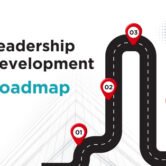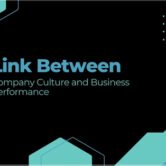Culture-Focused Leadership: Why It’s More Powerful Than Policy

In today’s fast-evolving workplace, traditional leadership based strictly on rules and policy manuals is rapidly losing its effectiveness. Organizations that once thrived on detailed handbooks, compliance frameworks, and rigid hierarchies are now facing a new challenge: engaging and retaining a dynamic, value-driven workforce. The solution lies not in drafting more rules but in embracing culture-focused leadership — a leadership style rooted in values, purpose, trust, and human connection.
Culture-focused leadership shifts the spotlight from controlling behaviour through policies to inspiring it through shared beliefs. It’s not about micromanaging but about setting the tone for how people think, behave, collaborate, and innovate. Let’s explore why this approach is far more powerful than policy in shaping resilient, high-performing organizations.
Understanding Culture-Focused Leadership
At its core, culture-focused leadership centers around intentionally creating and nurturing an organizational culture that reflects shared values, beliefs, and behaviors. Leaders who focus on culture understand that what people believe drives how they act.
Rather than leading by enforcing rules, they lead by example, creating clarity around the organization’s purpose and values. They cultivate trust, foster autonomy, and encourage accountability — not because a policy demands it, but because the culture supports it.
Policy May Control, But Culture Inspires
Policies have their place in any organization. They establish legal and ethical guidelines, clarify expectations, and provide structure. However, policies are reactive by nature — they typically arise in response to problems and are often enforced through fear of punishment.
Culture, on the other hand, is proactive. It shapes behavior in a more sustainable, intrinsic way. When employees truly understand and align with a company’s purpose and values, they make better decisions on their own — even in situations not covered by policy.
Consider this: You can write a 20-page dress code policy, or you can foster a culture of professionalism, where people take pride in representing their team well. The former controls behavior temporarily; the latter inspires it consistently.
Culture Enhances Employee Engagement
Employees today are not just looking for a paycheck — they want meaning, growth, and connection. According to Gallup, organizations with strong cultures see 72% higher employee engagement and 29% higher profitability.
A policy can tell people what to do. A strong culture tells them why it matters.
Culture-focused leaders invest in making the workplace emotionally safe, inclusive, and purpose-driven. They recognize individuals, celebrate achievements, and ensure people feel seen and heard. This emotional investment pays off in the form of higher loyalty, motivation, and performance.
It Encourages Ownership, Not Just Compliance
Policies often breed a compliance mindset — people do just enough to meet the standard. Culture-focused leadership, however, nurtures ownership. When people believe in the company’s mission and feel aligned with its values, they go above and beyond.
This sense of ownership is vital in uncertain or fast-changing environments where not every situation can be anticipated with policy. Employees with strong cultural alignment don’t wait to be told what to do — they take initiative and lead from where they are.
It Builds Trust and Resilience
In times of change, disruption, or crisis, policies can fall short. Culture, on the other hand, provides a dependable compass. Organizations with strong cultures bounce back faster because employees trust each other and their leaders.
Culture-focused leaders are transparent, consistent, and empathetic. They model the values they expect to see, and in doing so, earn the trust of their teams. This trust builds resilience, reduces fear, and fuels innovation — because people feel safe to speak up, fail forward, and grow.
Culture Supports Innovation and Agility
Innovation doesn’t thrive under rigid policies. It needs freedom, creativity, and risk-taking — all of which flourish in a strong, supportive culture.
Culture-focused leadership encourages curiosity, experimentation, and collaboration. It allows teams to challenge the status quo, share ideas openly, and adapt quickly. Instead of waiting for approval or fearing the consequences of failure, employees in such cultures feel empowered to try new things and solve problems creatively.
Policy Can’t Replace Human Connection
No matter how well-crafted, a policy cannot foster empathy, inspire belief, or create passion. It’s the daily behaviors, attitudes, and conversations between leaders and their teams that shape how people feel and function.
Culture-focused leadership recognizes this and prioritizes relationship-building. It’s not about enforcing compliance from the top down but about cultivating alignment from the inside out. Leaders who connect on a human level create workplaces where people want to show up and contribute — not just where they have to.
How to Shift from Policy-Driven to Culture-Focused Leadership
If your organization is ready to embrace culture-focused leadership, here are some steps to begin:
- Define your core values clearly and authentically. These should reflect what you truly stand for, not just what sounds good.
- Hire and promote based on values, not just skills. Skills can be taught — cultural alignment cannot.
- Lead by example. Embody the behaviours you want to see, from communication style to decision-making and conflict resolution.
- Reward cultural alignment. Recognize and celebrate employees who live the company’s values daily.
- Listen actively. Make space for honest conversations. Employees are your best source of insight into whether your culture matches your intentions.
- Build trust through consistency. Be transparent, follow through on promises, and be willing to admit when things go wrong.
Final Thoughts
While policies are necessary to provide structure and clarity, they are no substitute for culture. In a world that demands agility, innovation, and emotional intelligence, culture-focused leadership is the real game-changer.
It creates workplaces that don’t just function — they thrive. It builds teams that don’t just follow — they lead. And it develops organizations that don’t just survive — they make a lasting impact.
Leadership is no longer about enforcing rules. It’s about setting a standard that people want to live up to — not because they’re told to, but because they believe in it. That’s the power of culture.










